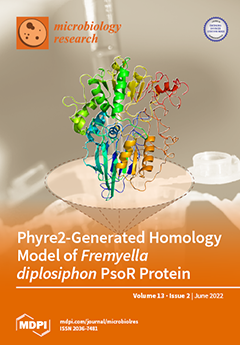Lactic acid (LA) is widely used in many industries as a crucial starting material in food products, bio-based materials, and biodegradable polymers. The goals of this research were to isolate LA bacteria from food wastes, assess their potential for LA production, and study
[...] Read more.
Lactic acid (LA) is widely used in many industries as a crucial starting material in food products, bio-based materials, and biodegradable polymers. The goals of this research were to isolate LA bacteria from food wastes, assess their potential for LA production, and study their growth characteristics. In this study, six bacterial strains were isolated from food waste and identified using 16S rRNA gene sequencing; namely,
Weissella viridescens WJ39,
Leuconostoc lactis YS33,
Leuconostoc citreum KD42,
Leuconostoc mesenteroides VN60,
Macrococcus caseolyticus FCI29, and
Weissella confusa RG41.
W. viridescens WJ39 showed the highest potential for lactic acid production (17.56 g L
−1day
−1), and the lowest potential was found in
L. lactis YS33 (14.09 g L
−1day
−1). There were significant differences (
p < 0.05) in the LA production rates among
Weissella spp.,
Leuconostoc spp., and
Macrococcus spp. Moreover, dramatic differences in growth rate were observed among the six strains.
W. viridescens WJ39 exhibited the highest growth rate (0.80 h
−1), while
M. caseolyticus FCI29 exhibited the lowest growth rate (0.57 h
−1).
W. viridescens WJ39 also exhibited lactic acid production (at a rate around 2 g L
−1day
−1) in a lab incubation experiment with food waste as a nutrient source. The draft genome of
W. viridescens WJ39 with 16 contigs was constructed with an N50 of 215217 bp. The genome size was approximately 1.54 Mb, with a GC content of 41%. A
hicD gene, known to catalyze the conversion of pyruvate to D-lactate, was discovered in the genome. This study illustrated the potential for the production of lactic acid from food waste with lactic acid bacteria.
Full article





